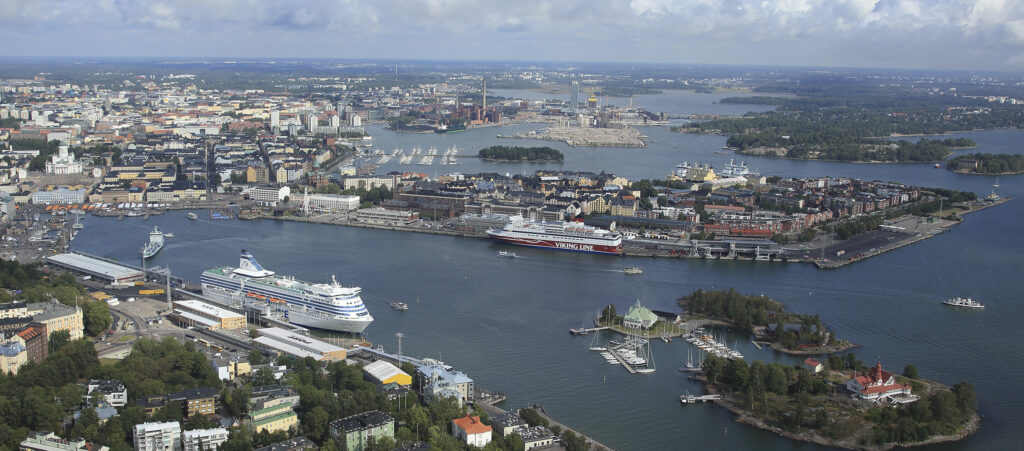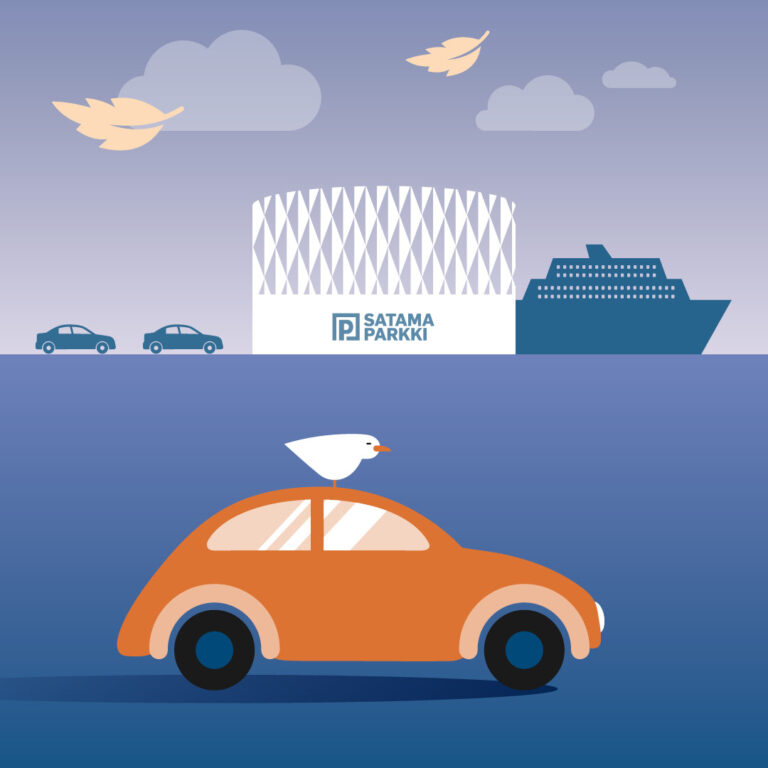Scenario work completed on the impact of the location of Helsinki port operations

– Centralising passenger traffic in Vuosaari would be unrealistic
At the request of the mayor of Helsinki, Jan Vapaavuori, the Port of Helsinki has prepared scenario work on the impact of the location of the port’s operations on the port’s business operations and on the realisation of the City of Helsinki’s vision of becoming the best-functioning city in the world.
The scenario work involved the examination of three different options from the perspective of traffic and travel forecasts, customer views, investment needs, and technological development up until 2040.
- Basic scenario: operations continue in the current harbour parts
- West Harbour scenario: centralisation of the traffic of the centre ports
- Vuosaari scenario: extension of the port of Vuosaari to become a passenger port
If implemented, the scenarios will produce significant differences by 2040. The basic and West Harbour options are estimated to be the most viable scenarios.
Thebasic scenario allows the development of the most commercially productive shipping, and would therefore be the best solution for the Port of Helsinki and its customers. In the scenario, traffic flow problems in the city centre will remain, and would require decisions by the City of Helsinki to streamline the street network.
In the West Harbour scenario, passenger numbers decrease slightly but traffic in the city centre would be smoother. This scenario would require a separate traffic solution, a port to Länsiväylä road tunnel. In the South Harbour area, land would be freed for other development by the City of Helsinki.
The most demanding scenario is the West Harbour scenario, in which Tallinn traffic would be centralised in Vuosaari. This option would require substantial investments, but despite this passenger numbers would significantly decrease. The scenario would also require the expansion of the port area within the sphere of influence of a sensitive Natura nature site and, in addition, the extended route would increase emissions from shipping. This option is a challenge for business and the City of Helsinki strategy goals.
“The Port of Helsinki has such great importance for the vitality of the Helsinki metropolitan area and for the functionality of logistics in Finland as a whole that future decisions require good preliminary information. The study provides the foundations for good public debate and political decision-making”, says Ville Haapasaari, CEO of the Port of Helsinki Ltd.
Complementary study supports city centre solutions
To complement the scenario work, the City of Helsinki, the Port of Helsinki Ltd, and the Finnish Shipowners’ Association commissioned a study of alternative arrangements for freight and passenger transport in the Port of Helsinki. (Hesarama study). This study looked at the future through four options (scenarios):
- Basic scenario 0: Current situation
- Scenario 1: 1a) Concentration of traffic in the centre of the West Harbour or 1b) Tallinn traffic to West Harbour and Sweden traffic to Katajanokka
- Scenario 2: Transfer of passenger traffic to Vuosaari
- Scenario 3: Separation of freight and passenger traffic from each other
The study examined the impact of the various options on transport arrangements, land use, passenger and freight business and logistics, and the environment and tourism sector.
In the current situation scenario, operations were currently expected to continue through the existing port facilities and investment plans. If realised, this option would bring growth to passenger and freight traffic volumes, but traffic problems would be expected to become even more acute.
In the scenario whereby traffic would be centralised in the centre (scenario 1a and 1b), the implementation of a separate transport solution, the port-Länsiväylä road tunnel, is essential to prevent the traffic problems in the Jätkäsaari region from worsening as the volumes in West Harbour increase further.
The scenario whereby passenger traffic is transferred to West Harbour would require significant investments and would result in a decrease in the number of passengers in ship transportation, which would also have negative economic impacts on the Helsinki metropolitan area. However, this scenario would free up valuable land for the city for real estate investments and recreational use.
The separation of freight and passenger traffic from each other would potentially present a critical challenge for shipping companies in terms of the profitability of operations. The current fleet is not able to respond profitably to the change, and renewing the equipment within a short period of time presents an economic challenge for existing operators.
Based on the Hesarama study, the current situation scenario and the scenario for concentrating traffic in the centre offer the most opportunities for growth. The other two scenarios involve significant commercial and environmental risks.
The Hesarama study was prepared by the consultancy firm Logscale Oy, led by Professor Lauri Ojala, with the help of Professor Pekka Leviäkangas, from the University of Oulu, and Assistant Professor Tomi Solakivi, from the Turku School of Economics.
Material links in Finnish:
Ville Haapasaari’s presentation
Lauri Ojala’s presentation
Port of Helsinki Ltd scenario study
Hesarama, alternative arrangements for freight and passenger transport in the Port of Helsinki
Impact of port scenarios on urban development and economy
Q&A about the Scenarios
Pictures for press use
Further information:
Port of Helsinki Ltd. Mediadesk
mediadesk(at)portofhelsinki.fi
Tel. +358 (0)40 506 5280
CEO Ville Haapasaari, Port of Helsinki Ltd.
ville.haapasaari(at)portofhelsinki.fi
Tel. +358 (0)40 709 8798
Professor Lauri Ojala, Logscale Ltd.
lauri.ojala(ata)logscale.fi
Tel. +358 (0)50 502 7031
Head of the Master Planning, City of Helsinki, The Urban Environment Division
Pasi Rajala
pasi.rajala(at)hel.fi
Tel. +358 (0)9 310 20417


